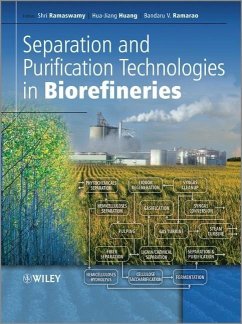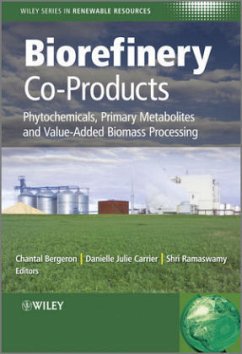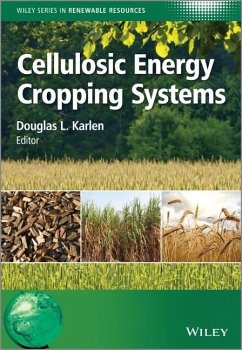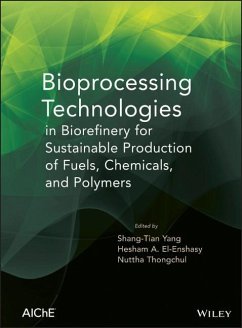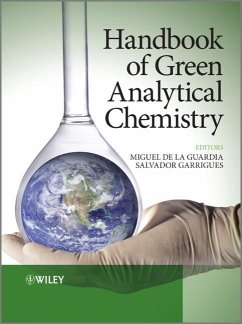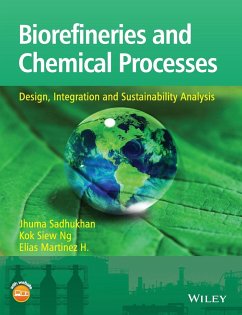
The Role of Green Chemistry in Biomass Processing and Conversion
Versandkostenfrei!
Versandfertig in über 4 Wochen
138,99 €
inkl. MwSt.
Weitere Ausgaben:

PAYBACK Punkte
69 °P sammeln!
Providing readers with a basic knowledge of biopolymers, The Role of Green Chemistry in Biomass and Processing and Conversion offers a score of methods and solutions to integrate green chemistry that will lead to cleaner burning fuels. This up-to-date guide and review on applying green chemistry technologies covers recent advances on homogenous, heterogeneous catalytic system and biocatalysis for biomass conversion and the assessment of environmental and ecotoxicological effects of bioenergy and ionic liquids platforms, which is especially important to biorefinery manufacturing companies and researchers interested in chemical aspects of "clean technology".
Sets the stage for the development of sustainable, environmentally friendly fuels, chemicals, and materials
Taking millions of years to form, fossil fuels are nonrenewable resources; it is estimated that they will be depleted by the end of this century. Moreover, the production and use of fossil fuels have resulted in considerable environmental harm. The generation of environmentally friendly energy from renewable sources such as biomass is therefore essential. This book focuses on the integration of green chemistry concepts into biomass processes and conversion in order to take full advantage of the potential of biomass to replace nonsustainable resources and meet global needs for fuel as well as other chemicals and materials.
The Role of Green Chemistry in Biomass Processing and Conversion features contributions from leading experts from Asia, Europe, and North America. Focusing on lignocellulosic biomass, the most abundant biomass resource, the book begins with a general introduction to biomass and biorefineries and then provides an update on the latest advances in green chemistry that support biomass processing and conversion. Next, the authors describe current and emerging biomass processing and conversion techniques that use green chemistry technologies, including:
Green solvents such as ionic liquids, supercritical CO2, and water
Sustainable energy sources such as microwave irradiation and sonification
Green catalytic technologies
Advanced membrane separation technologies
The last chapter of the book explores the ecotoxicological and environmental effects of converting and using fuels, chemicals, and materials from biomass.
Recommended for professionals and students in chemical engineering, green chemistry, and energy and fuels, The Role of Green Chemistry in Biomass Processing and Conversion sets a strong foundation for the development of a competitive and sustainable bioeconomy.
This monograph includes a Foreword by James Clark (University of York, UK).
Taking millions of years to form, fossil fuels are nonrenewable resources; it is estimated that they will be depleted by the end of this century. Moreover, the production and use of fossil fuels have resulted in considerable environmental harm. The generation of environmentally friendly energy from renewable sources such as biomass is therefore essential. This book focuses on the integration of green chemistry concepts into biomass processes and conversion in order to take full advantage of the potential of biomass to replace nonsustainable resources and meet global needs for fuel as well as other chemicals and materials.
The Role of Green Chemistry in Biomass Processing and Conversion features contributions from leading experts from Asia, Europe, and North America. Focusing on lignocellulosic biomass, the most abundant biomass resource, the book begins with a general introduction to biomass and biorefineries and then provides an update on the latest advances in green chemistry that support biomass processing and conversion. Next, the authors describe current and emerging biomass processing and conversion techniques that use green chemistry technologies, including:
Green solvents such as ionic liquids, supercritical CO2, and water
Sustainable energy sources such as microwave irradiation and sonification
Green catalytic technologies
Advanced membrane separation technologies
The last chapter of the book explores the ecotoxicological and environmental effects of converting and using fuels, chemicals, and materials from biomass.
Recommended for professionals and students in chemical engineering, green chemistry, and energy and fuels, The Role of Green Chemistry in Biomass Processing and Conversion sets a strong foundation for the development of a competitive and sustainable bioeconomy.
This monograph includes a Foreword by James Clark (University of York, UK).




